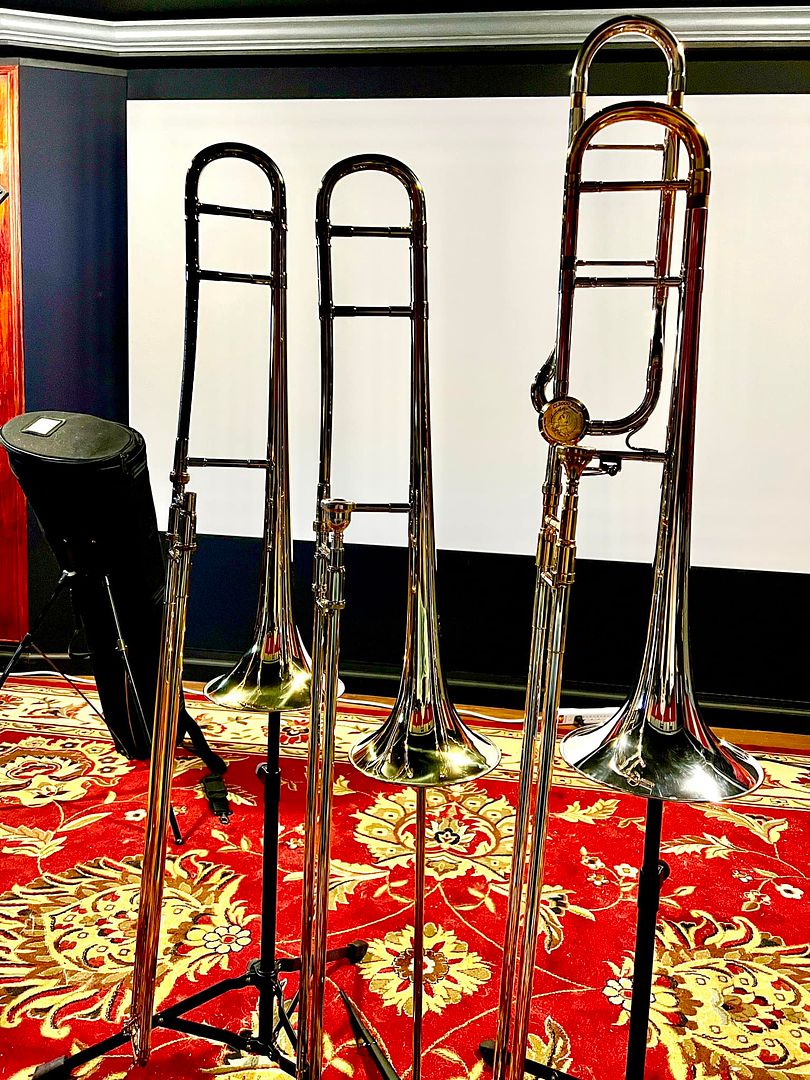Tromborn wrote: Sun May 14, 2023 1:32 pm
I once spoke with Heinrich Thein (Thein Brass, Bremen) who explained me the following:
Brass Sheets are rolled and therefore they have a specific rolling direction. At Thein, they just cut their cups exactly in rolling direction and process them accordingly. They have more waste as a result, but the sound qualities of a cup made in rolling direction are much better than those made across or against the rolling direction.
So, maybe the good cup is cut in rolling direction, but the other one is not?
As far as I know, Thein doesn't make bells in-house anymore. Like many German makers, they buy bells from a specialized shop (that happens to also be one of the main makers of sackbuts).
CalgaryTbone wrote: Thu May 04, 2023 9:48 am
Before there were modular instruments with removable leadpipes and detachable bells, it used to be a common thing to go to a large music store and switch bells and slides of several horns of the same model to try to find the best combination for you. I did that as a young high school player to pick out my first 88H.
There are subtle differences between different slides and bells, even if they are actually identical models. I think that modern manufacturing techniques have made components more consistent, but not identical.
Jim Scott
I still do that quite regularly (3 times in the last year or so) at the Egger workshop, going with students to select their new instrument, or doing it for colleagues abroad who can't do it themselves. It's a fascinating and quite eye and ear-opening process. Also did a couple times with another maker who wants you to try and select individual components as they get ready (so first the bell flare, then a week later the Anstoß, then the neckpipe and back bow, etc.). He writes down your observation, and the next time he doesn't tell you which is which. It was very interesting that both times I went through the process with him, the final bell section I assembled didn't include the bell flare that was my favourite the first week when it was mounted on the prototype. As you introduce other components, it becomes not just about which individual example of each is the best, but how the different components interact with and balance each other.
On the main topic,
There is tension at a molecular level that is different in each and every otherwise identical bell. The metal hardens as it is worked, and the tension is released (and rigidity lost) when the metal is annealed again. Any part of a brass instrument repeatedly goes through several annealing cycles as it gets shaped into the instrument. It is impossible to finish two bells at exactly the same degree of work-hardening or annealing, let alone getting the same level of hardness everywhere within the bell the same every time you anneal or work the piece.
Add to that the fact that the shaping process is done/controlled at least partially by hand, and its also impossible to have two bells with exactly the same thickness overall, and even more impossible for them to have exactly the same thickness at every single point of the bell.
Add to that the fact that two bell sections can't be assembled with exactly the same amount of assembly tension. You can aim for zero tension in the assembly, but it is impossible to achieve. You can't have exactly the same amount of solder at exactly the same places, with exactly the same amount of heat applied exactly at the same places. You also can't have an assembly jig that is 100% reliable.
So yeah, making two absolutely precisely identical things at every level is something no machine can do, let alone a human. There are too many elements involved, at every level from macro to microscopic, that you cannot possibly control.

